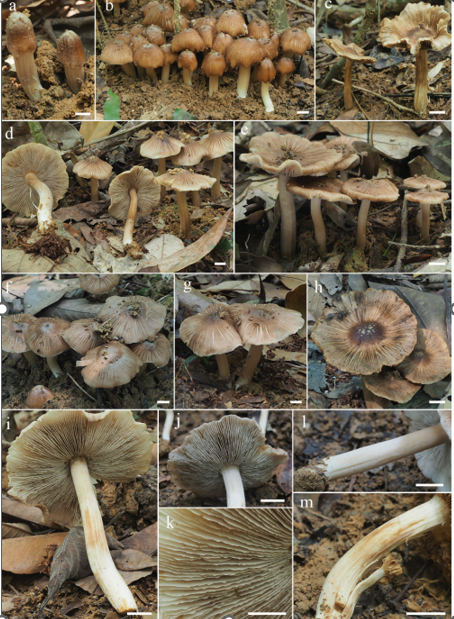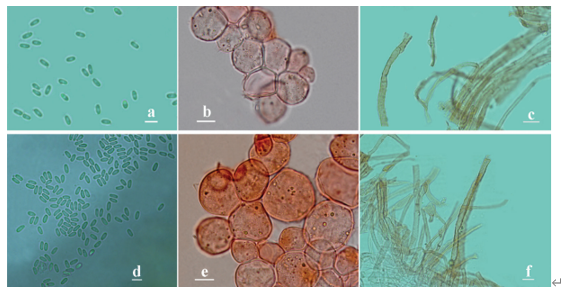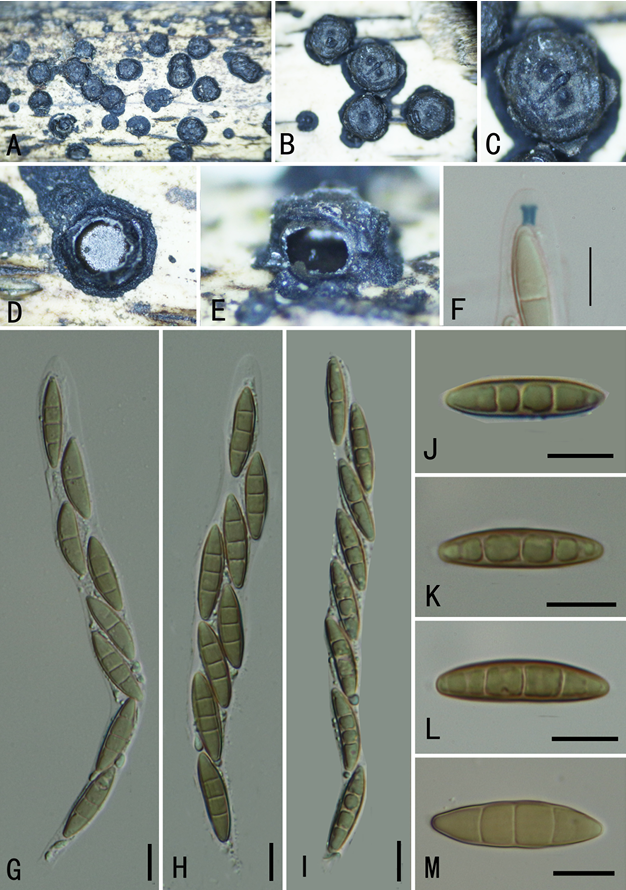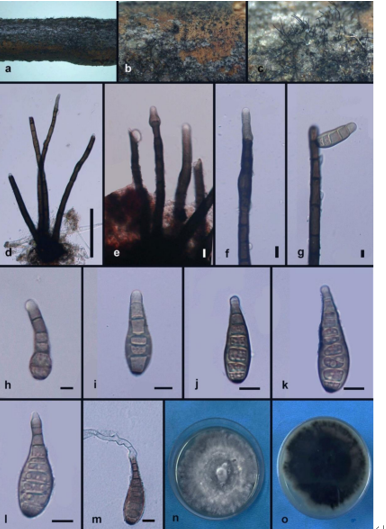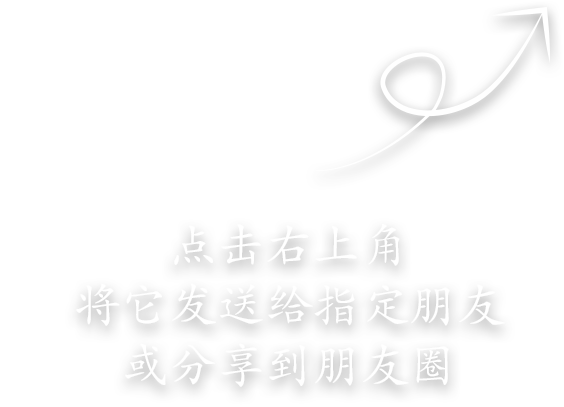Tarzetta confusa F.M. Yu & S. Wang, Q, sp. nov.2021
MycoBank Index Fungorum number: IF558484; Facesoffungi number: FoF 09910
Holotype: HKAS 115755.
Morphological description
Sexual morph:Apothecia 9–20 mm broad, sessile or shortly stipitate, cupuliform, scattered, hymenium greyish-yellow when fresh, receptacle surface greyish-yellow to 1122 yellowish brown, finely warted, whitish to beige; Margin denticulate and a bit darker than out surface when mature. Subhymenium and medullary excipulum thin, of textura intricata, with hyaline hyphae 3.5–7.5 μm wide. Ectal excipulum 92–160 μm, of textura subglobulosa/angularis, with cells 11.5–32 × 4.5–15.5 μm. Asci 310–365 × 14–17 μm, 8-spored, cylindrical, narrowed to the long base, without croziers, operculate, inamyloid. Paraphyses 2–3.5 μm wide, filiform. Ascospores 13.5–15.5 × 8–9 μm, Q = 1.5–1.8, Qm = 1.7, hyaline, ellipsoid, smooth and thickwalled, containing two large oil guttules.
Asexual morphs:
Cultures:
Habitat: on soil.
Distribution: China, Tibet, Nyingchi County.
GenBank Accession: (ITS) MZ438005 and (LSU) MZ438008.
Notes: Tarzetta ochracea, T. quercusilicis, T. linzhiensis and T. confusa formed four successive sister lineages with ML = 100%; PP = 1 LSU+ITS support. A comparison of sequence data of T. confusa differed by 125 ITS (20.06%, 623 bp) and 25 LSU (2.92%, 855 bp) base pairs with T. linzhiensis (Fig. 14). The species are similar in the size of apothecia, but T. confusa can be distinguished by its abundant prominent warts on the receptacle surface. Tarzetta confusa also differs from T. linzhiensis mainly by its slimmer asci and smaller ascospores. To date, only T.catinus and T. cupularis have been reported from China (Zhuang 2014). Zhuang (2014) indicated that these Chinese species are easily confused because their similar fruiting bodies; the apothecia of both species are between 6 to 25 mm diameter the shape of ascospores and structure of excipulum are key features that can be used to distinguish T. catinus from T. cupularis. However, compared with European materials, the Chinese Tarzetta species apothecia are variable in size, possibly because of different habitats and geographic locations (Zhuang 2014, Van Vooren et al. 2019). When our two new species are compared with T. catinus and T. cupularis from China, some slight differences can be seen. All four species are relatively small, with a diameter of no more than 30mm. However, they have very specific shaped and sized ascospores.
Reference: Hyde KD, Suwannarach N, Jayawardena RS, Manawasinghe IS, Liao CF, Doilom M, Cai L, Zhao P, Buyck B, Phukhamsakda C, Su WX, Fu YP, Li Y, Zhao RL, He MQ, Li JX, Tibpromma S, Lu L, Tang X, Kang JC, Ren GC, Gui H, Hofstetter V, Ryoo R, Antonín V, Hurdeal VG, Gentikaki E, Zhang JY, Lu YZ, Senanayake IC, Yu FM, Zhao Q, Bao DF 2021 – Mycosphere notes 325-344 – Novel species and records of fungal taxa from around the world. Mycosphere 12(1), 1101–1156, Doi 10.5943/mycosphere/12/1/14
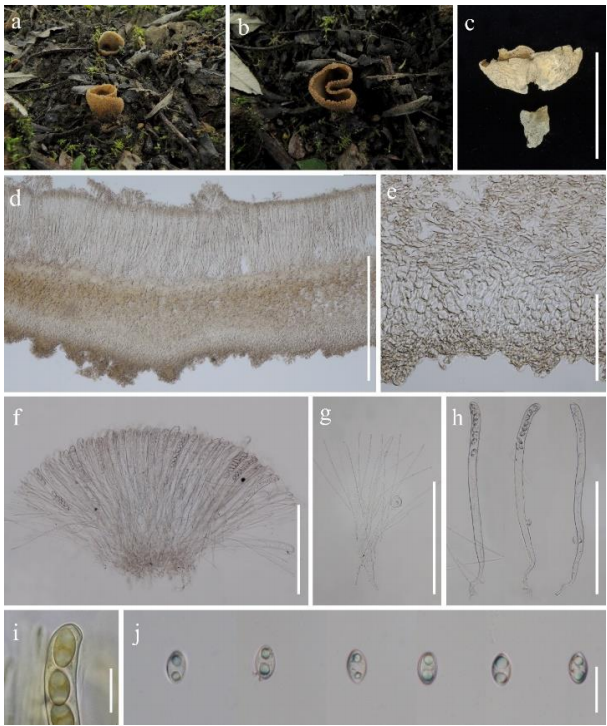
Tarzetta confusa (HKAS 115755, holotype). a–c Typical mature specimens. d Anatomic structure of a portion of an apothecium. e Receptacle surface of pileus. f Asci and paraphyses. g Paraphyses. h Asci. i Upper part of ascus in Melzer’s reagent. j Ascospores. Scale bars: c = 20 mm, d = 500 μm, e = 100 μm, f–h = 200 μm, i–j = 20 μm.


